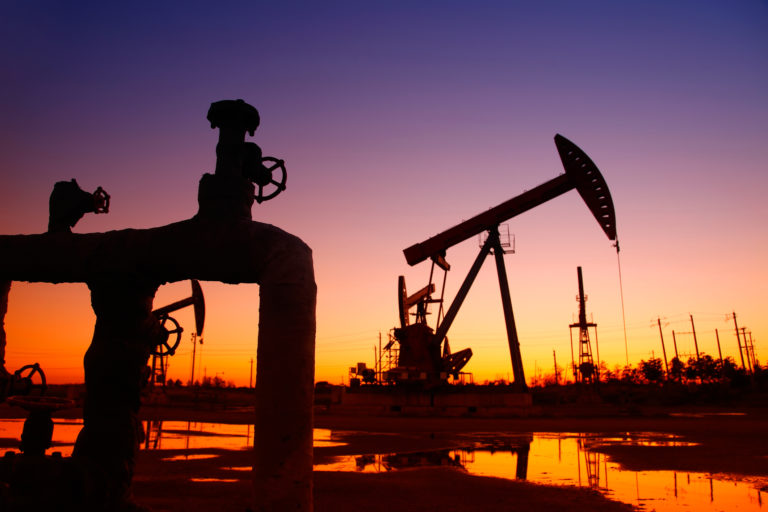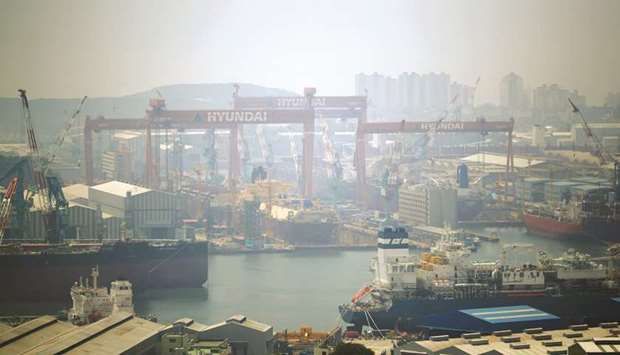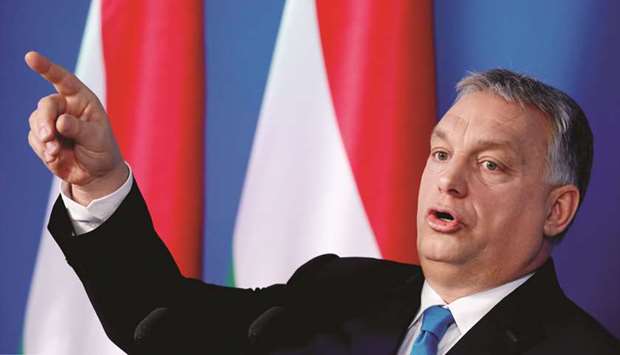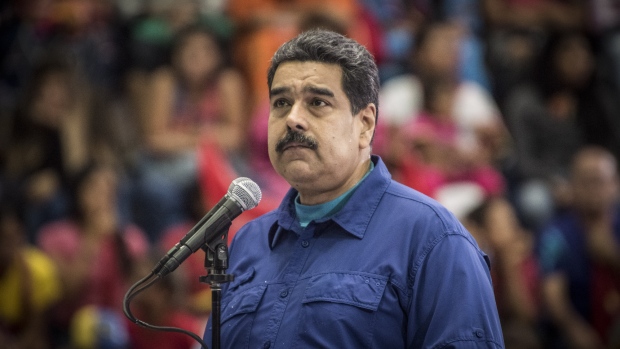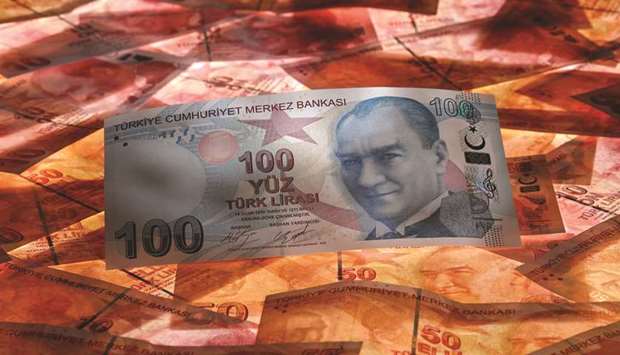On the occasion of the 5th South EU Summit – taking place today in Nicosia – the President of Cyprus provided an exclusive interview, highlighting the importance of 2019 for the future of the European Union, the role of Southern Europe in catalysing a reform agenda, while emphasizing the increasing relevance of Cyprus in the attainment of EU energy security and climate targets.
South EU Summit: You assumed your duties as President of Cyprus on the 1st of March, 2013 – only a few days before the climax of the financial crisis in the country. Now, in your second term, not only has the island-nation made a smooth exit from its bailout programme, Cyprus returned to investment grade in 2018, and is currently one of the fastest growing Member States in the eurozone (with a 4% GDP growth rate). What were the keys to achieving this feat, and what measures do you believe need to be prioritized to continue building confidence and credibility in the Cypriot economy?
President Anastasiades: During the past few years, we have succeeded in turning an economy in distress into a story of strong economic recovery, that gained international praise.
The positive repercussions of an ambitious reform programme, and the careful management of state finances, are being reflected through, among others: successive budget surpluses, a dynamic growth rate of 4%, a drastic reduction in unemployment, consecutive upgrades of our economy by international rating agencies, as well as a significant reduction in taxation.
At the same time, despite the economic difficulties we have faced, our country’s comparative advantages not only remain intact, but have been further enhanced and expanded. These include one of the most competitive corporate tax rates, a significant network of Agreements for Avoidance of Double Taxation, a highly qualified and professional workforce, and a fully EU harmonised tax and legal system.
The combination of the above, in conjunction with the reforms in the public sector, and the enhancement of the tax and legal frameworks, resulted in renewed substantial investments in a wide range of sectors.
From the operation of oil and gas giants in our Exclusive Economic Zone, to the licensing of the first integrated casino resort (with an investment of more than half a billion euros), an impressive 18 per cent annual increase in the registration of investment funds, the record numbers of the tourism industry in both arrivals and revenue, and the commercialization of the Limassol port, it is evident that our efforts have borne fruit.
The challenge now is to keep up the momentum and ensure that Cyprus remains on a path of sustainable growth. Sound governance of public finances, complemented by a business-friendly investment environment, a comprehensive government strategy for investment facilitation, and continuing to invest in education, research and development, entrepreneurship, and the empowerment of our youth, are critical elements on this path.
To this end, maintaining the reform momentum is imperative. The entire planning for the years 2018-2023 is a continuation of everything we achieved during my first term in office. With this in mind, we will continue consultations with the parliamentary parties, with a view to gain their support for our reforms programme, in the fields of public service, education, health, the judiciary system, research and innovation, and e-governance.
We also aim to continue with the policy of tax reductions, and provide new incentives in order to further boost entrepreneurship and attract new investments, with emphasis placed on innovation and start-ups. The new Investment Law to fast-track licensing procedures for large investments, and the establishment of a new enhanced investment funds framework, are crucial steps in this direction.
At the same time, the newly-established Deputy Ministry of Shipping, offers substantial support and attention to the already thriving maritime sector of Cyprus, and we have no doubt that the Deputy Ministry of Tourism, operational since January 1st of 2019, will further enhance the growing tourism industry.
Most importantly, we will continue to invest in our people, and work with determination and passion to drive change, progress, and prosperity in our country.
South EU Summit: Deepening the Economic and Monetary Union is a critical step towards greater integration at a eurozone level. What measures do you believe need to be prioritised at an EU policy level, leveraging on Cyprus’ experience, to safeguard the country – and the eurozone – from future headwinds?
President Anastasiades: Without a doubt, we, the Member States of the Economic and Monetary Union, have come a long way in further deepening and strengthening the architecture of this relatively young structure.
Actually, this year only marks the Eurozone’s 20th year of existence.
Mediterranean states have significantly contributed to this effort; we have taken part in long, sometimes difficult debates, on how to best promote the reform of the euro area. We have done so always in a constructive spirit.
As we all acknowledge, there are still a number of open issues that we need to discuss and decide upon, on which compromises have to be made, from all sides. At the end of the day, the further deepening of the Economic and Monetary Union shall, and will bring benefits to all its members, regardless of their geographic position.
Important issues ahead of us include the establishment of a central stabilisation function, in order to cushion Economic and Monetary Union countries from large and asymmetric macroeconomic shocks.
Advancing on the design and gradual implementation of a budgetary instrument, for convergence and competitiveness of the euro area, remains a priority. We stand ready to pursue the discussion within the eurozone towards a stabilisation function in the Euro area as well.
Concerning the Banking Union, significant progress has been achieved, in risk reducing measures for the banks. It is now time to move on with more concrete actions, and timelines, in regard to risk sharing measures, including the establishment of a European Deposit Insurance Scheme, so as to provide protection to depositors, regardless of the geographic location of deposits.
South EU Summit: Cyprus is the host of the fifth South EU Summit since its launch in September 2016, bringing together 7 governments that jointly represent close to 40% of EU GDP and population. What is the purpose behind this gathering, and what results would you like to see come about?
President Anastasiades: I am certain that we all agree that this year, 2019, will be a defining year for Europe; this year the legislative programme of the last five years is coming to an end; starting in May, with the European elections, we are opening the cycle of institutional changes; in May, we, the EU leaders, are also called on to set out our strategic vision for the EU, and provide an answer to our citizens’ legitimate concerns; in two months’ time, we need to be ready to move forward as a Union of 27. Our actions this year will count more than ever.
Europe is facing all sorts of challenges – social, economic, environmental, political threats and security issues, challenges that touch upon the life of our citizens.
European citizens look to us, politicians, for answers to their daily problems; they demand the bettering of their living conditions; they ask for security, tighter control of our borders, and appropriate measures against migration; they seek a bold approach to a changing environment, the impacts of which, we in the Mediterranean feel the most. Our citizens have every reason to turn to their leaders, and the Institutions, expecting solutions to their problems, and the conditions for a more stable, safe and prosperous future.
So, 2019 should be a year of change, and a change we deliver, it should be our defining moment; that we, as the European Union, do more in answering our citizens through targeted and visible actions. We have a historic responsibility to do so, through a calibrated, ambitious, and result oriented strategy, that will put the European project back on track; make it relevant; adapt it to modernity.
We, the Mediterranean states, have common concerns, and we are determined to pursue fair and well-designed policies, for the benefit of Europe and our citizens. Change and progress are both possible if there is vision, determination, leadership, cooperation, and coordination. I have no doubt that all these elements exist, and we can take the Union one step further, for the benefit mostly of the Europeans. That is the reason and purpose of our gathering.
South EU Summit: It is widely accepted that Cyprus cannot reach its full potential without a reunification. Besides reducing the political risk of the country, there are estimates that suggest that the reunification of the island could triple the Cypriot economy’s growth rate. You recently expressed your commitment to resume “a creative dialogue” to reach “a settlement that brings peace and stability” to Cyprus. Further to the stalemate in Crans-Montana, how do you propose to move forward on the Cyprus issue, and what type of solution to you envisage?
President Anastasiades: I cannot stress enough, the significance, and the consequent multiple benefits, that the solution of the long-lasting Cyprus problem, and the normalisation of our relations with Turkey, would bring about.
In this regard, with a renewed mandate from the people, my top priority remains none other than addressing the unacceptable current state of affairs, with the continuing Turkish occupation of 37 per cent of the territory of the Republic of Cyprus, since there is no doubt, that lasting peace and stability can only be achieved through the comprehensive settlement of the Cyprus Problem.
To this end, on numerous occasions, I reiterated in the clearest terms to the UN Secretary-General, our partners in the EU, the Permanent and non-Permanent Members of the Security Council, and the international community in general, that I remain strongly committed to resuming the negotiating process.
What is of course required, is to create the necessary conditions, that will allow the dialogue to resume, on the basis of good will, and a constructive stance from all stakeholders, particularly from the Turkish side, in order to safeguard the positive outcome of the negotiations.
The above-mentioned were repeatedly reiterated during my meetings with the UN Secretary-General, during which I also stressed, that I remain sincerely committed to negotiate a solution within the framework set out by the Secretary-General, as clarified on July 4, 2017, with the same determination and positive attitude we have demonstrated since the beginning of the dialogue.
Currently, we expect the arrival of the Special Envoy of the United Nations Secretary-General, who has already held two separate meetings with all parties involved, with the aim of agreeing on the “Terms of Reference”, as regards the methodology of a new negotiating process.
Within this context, I do hope that the meetings of the special envoy of the United Nations, which will soon take place with all other interested parties and stakeholders involved, will allow the Secretary-General to be in a position to resume negotiations.
Taking this opportunity, I wish to state that the failure of the Conference on Cyprus in July 2017 was precisely due to Turkey’s insistence on its long-standing position, in maintaining the continuation of the anachronistic system of guarantees, the unilateral right of intervention, and the permanent presence of Turkish troops.
I also wish to state that our side submitted comprehensive written proposals for each and every one of Mr. Guterres six-point framework, including on a new security architecture that would replace anachronisms, and the strategic aspirations of third countries against Cyprus.
Having said the above, at the same time, we should also not ignore the remaining significant differences on the other chapters of the Cyprus Problem. Differences that can be easily resolved, by adopting and respecting what is considered as our obligation: The European acquis.
It is only through adhering to these fundamental principles, which determine that a member-state of the United Nations, and the European Union, can only be considered as truly independent and sovereign, if it is free of any third country dependencies, that we can truly establish the conditions for prosperity, and peaceful co-existence between all the citizens of Cyprus, in an environment of safety and stability.
I truly wish that both our Turkish Cypriot compatriots, and Turkey, will respond positively to the new prospect that is unfolding again upon us, taking into account, in a comprehensive manner, and without being selective, the provisions set by the Secretary-General at the Conference in Crans-Montana.
On my own behalf, I wish to reassure, once again, my determination to work tirelessly to reach a comprehensive settlement, that will finally reunify our island after 44 years of division, ensuring conditions of safety for the future generations of Greek and Turkish Cypriots, without any third country military troops or guarantees.
A settlement that will satisfy the genuine desire of our people, especially of the younger generations, to live together and peacefully co-exist, collaborate and prosper, in a European country which fully respects their fundamental human rights and freedoms.
And, aside from the obvious fact that the solution of the Cyprus Problem, would be first and foremost to the benefit of all Cypriots, please allow me to bring to your attention some other merits that a settlement would bring:
- On a regional level, it would turn Cyprus into a model-country of stability and predictability, and would amplify Cyprus’ role as a security provider, in one of the most turbulent areas of the world.
- At a European level, it would end the oxymoron of having one of its member-states being divided, while it would also positively reinforce EU-Turkey relations, and the overall security architecture of the EU.
- Last, but not least, the solution of the international problem, which has been on the agenda of the United Nations during the last decades, will offer a beacon of hope, that even the most intractable problems can be solved peacefully, through the United Nations.
South EU Summit: Establishing a united strategy to manage migratory inflows currently constitutes one of the biggest challenges for the EU writ large. In fact, in 2018 Cyprus ranked 1st in asylum claims per capita, with close to 6,000 requests. What is your perspective in this regard, and how can the Union strike a balance between upholding EU founding values, such as solidarity, while safeguarding the interests of European citizens? What reforms to you believe should be made to the EU’s Common Migration Policy?
President Anastasiades: Last December, at the European Council, we discussed once more the implementation of the EU’s comprehensive approach. We had a rather heated discussion, I would say, during which I intervened three times.
We have been striving for months to come to a satisfactory solution to the migratory pressures we are faced with. Since the beginning of the crisis, several measures have been adopted, producing positive results; we welcome these, but there is still work to be done, especially on fair burden sharing, and shared responsibility among Member States.
What do we actually need in the end, in order to come to a lasting solution?
First, solidarity: front line states cannot be left alone anymore, to bear the responsibility of hosting, and providing adequate reception conditions, to the immense flows of asylum seekers, while other Member States provide only financial and technical assistance. Nor can the EU be dependent on the goodwill of certain third countries, to cooperate, and to carry out their obligations.
Second, measures concerning border control, or prevention of human trafficking and smuggling. The present crisis has an important humanitarian dimension that cannot be overlooked.
Third, effective cooperation with third countries, based on equal partnership, and mutual honouring of respective obligations.
Cyprus has been facing disproportionate pressures from asylum seekers during the last years. We are the first among Member States concerning the number of first time asylum applications in relation to the population. There is a 55 per cent increase for 2018, compared to the same period last year.
Since the beginning of 2018, we have registered the illegal entry of more than 1,840 persons into the areas that are under the effective control of the Republic. The main point of their departure remains Turkey and, recently, to a lesser extent, Lebanon (204 persons since the beginning of 2018).
Irregular migrants entering Cyprus are mostly Syrians, who are entitled to international protection, and cannot be returned. Hence, measures mainly focused on the management of flows of economic migrants, cannot help Cyprus.
There is also a high percentage of economic migrants whose return is not feasible, because Turkey does not apply the EU –Turkey Readmission Agreement towards Cyprus, (and does not apply the third country nationals clause towards any Member State).
Last but not least, the refusal of Turkey to properly implement the EU–Turkey Statement towards Cyprus, and prevent new migratory routes from emerging, aggravates the situation, since a considerable number of irregular migrants arrive in the areas that are not under the effective control of the Republic of Cyprus.
South EU Summit: Cyprus, Greece, Italy and Israel are at the forefront of re-designing new energy routes running through the Eastern Mediterranean. Besides the EuroAsia Interconnector, an EU decision regarding the EastMed pipeline is expected within the first months of 2019. Likewise, international attention is set on the results of the exploratory drilling being undertaken by ExxonMobil. What is your evaluation of the potential of Cyprus becoming a decisive player within the context of EU energy security, and how can these cross-border energy projects contribute to the strengthening of EU energy independence?
President Anastasiades: Energy security is of strategic importance for the EU, as it underpins not only our economic growth, but also our ability to alleviate poverty and improve social welfare. Most importantly, of course, it safeguards our ability to make political decisions, based solely on our code of principles, free of undesirable interdependencies.
The European Union has faced challenges in the past, that have illustrated the need to ensure that it is not over-reliant on a limited number of sources of energy, or be vulnerable to external pressure. Diversification of energy resources, and routes, is thus of paramount importance in ensuring secure, sustainable, affordable, and safe energy supply to Europe.
In this respect, I welcome the special attention paid by all to the Eastern Mediterranean, as a region that can become a reliable energy supplier, thus contributing substantially to the EU’s energy security.
Towards this end, we are actively working on the EastMed Pipeline Project, an ambitious project of great geopolitical significance, that will transfer Israeli and Cypriot resources to the EU, via Greece and Italy. We hope that the Intergovernmental Agreement that has been negotiated between Cyprus, Greece, Israel, and Italy, will be signed as soon as possible.
In the same vein, the signing of the Intergovernmental Agreement between Cyprus and Egypt last September, concerning the construction of an underwater pipeline, to export Cypriot natural gas to Egypt, the first of this kind in the region, is an equally important development, since the natural gas, through the Idku LNG plant, will be exported to the EU. In this respect, it has to be clear that the Government of the Republic of Cyprus is acting in the interest of all its citizens, Greek-Cypriots as well as Turkish-Cypriots, who will benefit accordingly.
All these developments highlight our firm conviction, that the wealth of the region can bring the countries of the region together, creating common interests, and contributing to peace and stability. In fact, it can become what coal and steel was for the EU, this time in a new regional context.
Unfortunately, Turkey, almost on a daily basis, continues to issue warnings and threats if we insist on proceeding with our energy programme. It is clear that Turkey’s actions in our maritime zones aim at advancing Turkey’s interests in the Eastern Mediterranean: to place the region’s hydrocarbon reserves under its control, and become the energy hub of Europe.
At the same time, Turkey’s behaviour poses a broader security threat in the fragile Eastern Mediterranean, and needs to be addressed, not only as a severe infringement of the sovereign rights of a Member State, but also of the rights and interests of the European Union as a whole.
Unqualified, tangible solidarity, is what is called for by the Treaties, and dictated by Turkey’s actions, and we need to send the message that Turkey needs to avoid any kind of friction, threat, or action, directed against a Member State, which damages good neighbourly relations and the peaceful settlement of disputes
South EU Summit: Taking into consideration the need to shape domestic policies that comply with climate targets on the one hand (penetration of RES in electricity production equivalent to at least 32%, energy efficiency of 32.5% by 2030 and becoming the world’s first climate-neutral economy by 2050), guarantee the competitiveness of individual economies on the other, while also catering to the social implications derived from this energy transition – what is your strategy in this regard?
President Anastasiades: Let me start by underlining that the October 2018 report by the Intergovernmental Panel on Climate Change (IPCC), and the COP-24 deliberations are clear: climate change has emerged as the new major threat, especially for the Middle East and Northern Africa.
All countries in the Eastern Mediterranean, and the Middle East, are particularly vulnerable. The forecasted impacts of a changing environment are dire for our region. They include social unrest, conflict, and mass migration, with serious ramifications for international peace, stability, and security.
We need to take immediate action at a national, regional, and an international level. There is no doubt about it.
The EU shall maintain its position as the global leader in the fight against climate change. Thus, we need to support the efforts of the European Commission in putting together the EU’s long term strategy, the soonest possible. A strategy that should be result oriented, and ambitious, with a vision for a climate neutral economy for the future.
Having in mind the worrisome outcome of the latest IPCC report, and other scientific studies, I convened a meeting last June, to evaluate and enhance Cyprus’ action in combating the effects of climate change for Cyprus and the region.
Cyprus, due to its location, and its excellent relations with the countries of the region, can play an important regional role in tackling climate change and its impacts. Cyprus offers a particularly attractive institutional setting for a number of international organisations, looking for regional presence/headquarters.
Cyprus could promote coordination and cooperation, between the countries of the region, so that an Action Plan is developed; this will record and mitigate climate change impacts, on sectors like Environment, Agriculture, Tourism, Health, in Eastern Mediterranean and Middle Eastern countries. It will develop an inclusive “dialogue forum”- a platform where national and regional stakeholders, can discuss science-based practical solutions to challenges related to climate change.
The initiative could feed the Eastern Mediterranean and Middle-Eastern region, with environmental observations and predictions required to assess the extent of the rapid warming and drying conditions, as well as better support national policies to meet CO2 emission pledges to the Paris Agreement.
In collaboration with advanced regional and international partners, who are experts in the field, efforts are currently underway to establish a new regional Centre of Excellence on Climate Change in Cyprus, being a knowledge hub for environmental and climate change research, and sustainable solutions, addressing the societal challenges of Cyprus, the Eastern Mediterranean and the Middle Eastern region.

